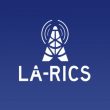NTIA head outlines interoperability grant program
Public-safety organizations should learn this summer the guidance associated with $1 billion in communications interoperability grants that will be distributed by the end of the year, the head of the National Telecommunications and Information Administration (NTIA) told Congress today.
Under current law, NTIA is mandated to distribute the grants by Sept. 30 of this year, a timeline that has forced the agency to develop a program that is more “formulaic” than otherwise might be pursued, NTIA Administrator John Kneuer said during a House Commerce subcommittee hearing. In particular, states need to submit projects that will address interoperability “gaps” identified in a Department of Homeland Security report released in January.
“The grant guidance that will come out in the summertime will be an announcement basically of the amount of money that each state is entitled to under this program,” Kneuer said. “The awards will come out by the end of this fiscal year [Sept. 30], but the awards will be conditioned upon the states concluding their plans and having a demonstrated ability to fill the gaps, so that we raise the level of interoperability across the country.”
A focus of the federal government in recent years, public-safety interoperability has been a priority of Congress, which last year enacted legislation that earmarked $1 billion of expected proceeds from the 700 MHz auction to pay for the grant program. This market opportunity has caused industry to develop several new technology solutions that NTIA wants public-safety entities to consider, within reason, Kneuer said.
“We need to be mindful that they’re deploying effective, proven technologies,” he said. “I don’t want firemen with a beta system responding to an incident. They need to know it’s going to work.”
While the hearing was supposed to focus on public-safety interoperability, many of the questions asked by the committee concerned perceived problems with the converter-box program associated with the digital-television transition in the 700 MHz band.
“This isn’t a welfare program; this isn’t a broadcaster-relief program; this is a public-safety program,” Jane Harman (D-Calif.) said. “What’s most important is that … first responders can communicate not only with each other but with other neighborhoods, the federal government or regional entities in the event of attacks.”

















